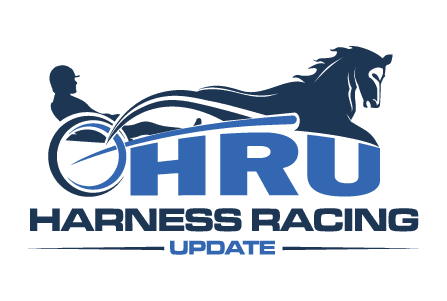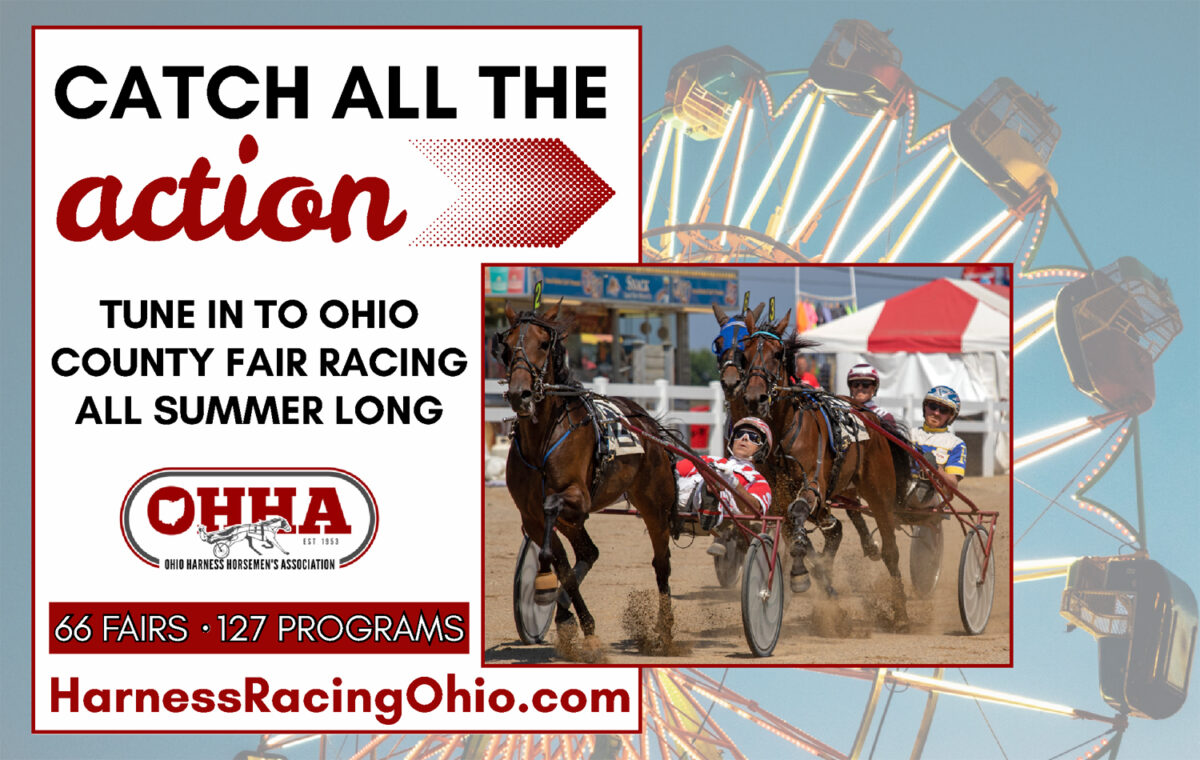There’s a solution for that, Part 2
by John Berry
Part 1 is here.
Continuing with the situations facing our sport, this Mane Attraction covers more of the subject matter brought to our attention… and some solutions to conquer the hurdles facing us to assure the longevity and success of our sport and industry.
There are always complaints that harness racing doesn’t get its fair share of air time — especially on television.
Yes, some tracks have excellent on-air shows that get some play from their faithful but, by and large (remember him?), harness racing gets the short end of the stick.
That will continue forever as our industry relies on outside sources to get the limited amount of races shown on a national level.
While, admittedly, we are struggling with a declining and aging fan base… There is a solution for that.
Harness racing needs its own television network… 24-hour network.
We cannot control our own destiny in someone else’s hands.
We are still a major sport and, as long as there is wagering involved — and other new innovations untouched by our industry as yet — we have the golden opportunity of resurrecting harness racing and bring it to new heights.
We are a world-wide sport with racing happening on a continual near 24-hour basis.
Yes, we have a window here in North America beginning as early as noon and ending as late as 11:59 p.m.
Overseas, east of us, we have France, Italy, Sweden, Finland, Austria and Russia… and even a bit in Bermuda.
Europe is six to eight hours ahead of us.
In France alone, there are said to be over 200 hippodromes.
To the south, there may be a few in South America and there are many in Australia and New Zealand.
The folks Down Under are 16-18 hours ahead of us.
There is enough harness racing to cover the world practically 24 hours a day and enough tracks, breeders and interested parties to get this funded and implemented.
It could become “the coolest hot spot” in harness racing and “the hottest cool spot.”
* * *
In many conversations over the years, the subject of whipping has come up with some judges levying fines for excessive use of the whip.
One driver/trainer in particular lamented, “Horses have always been good to me and never did anything to me so I refuse to use one on them.
“I’ve seen them striped [from the whip] and I’ve seen them blistered… and I’ve seen PETA even getting involved here and there.”
There is a solution for that.
Our sport needs to develop a new type of saddle pad — one I will take the liberty of calling the Berry Patch Saddle Pad… which would be approximately 2½ times the size of current saddle pads used in post parades and races.
The front numbered portion would remain constant with the remaining back section having a pad extending well back so that when a driver feels the need to use the whip, it will strike the padded back section creating the noise factor but eliminating the possibility of striping the horse, welts, blisters and/or other damage to its coat.
* * *
On rare occasions, a situation arises in the race office when a redraw of a race is a necessity.
As I have years of experience in that arena, there have been instances when a horse having drawn an inside post, example post position 1, redraws an outside post, example PP 9.
Only complaints from owners, trainers and drivers can result from this as I remember one trainer saying with a sneer, “Well, that just took $3,000 out of our pocket!”
To avoid future unfair situations in the future… There is a solution to that.
In the case of a redraw, all draw pills are used with “one” pill only drawn for the horse in question with all other horses moving out just one post position only.
This eliminates the possibility of severe damage in draw for all owners, trainers, drivers and, of course, horses.
* * *
The debate in our industry and with the fans continues on the subject of who is the best driver at our North American tracks.
Much of the talent on the track is when, for example, one driver is listed as first choice on more than one entry with that driver, of course, selecting the “best” horse in that field.
It’s so important that it’s shown on the bottom of a program page.
Yes, defining the “best” is difficult but… There is a solution for that.
Just as we have an open draw for horses (as opposed to a handicap draw), tracks might want to spice up their races a bit by having two races per program with an “open drivers draw,” with the top eight, nine, or 10 drivers in that draw for the horses in that particular race.
The drivers selected for open draw would be based on wins after the first month of a season or by UDRS (batting average) after their first, say, 25 drives.
For example, at Plainridge, let’s see how Brett Beckwith, Bruce Ranger, Matt Athearn, Kevin Switzer, Jr., Nick Graffam, James Hardy, Drew Campbell and Jay Randall would compete against each other on a more regular basis in an open draw for horses… or Tim Tetrick, David Miller, Yannick Gingras, Dexter Dunn, Scott Zeron, etc., in overnight races, at The Meadowlands.
Separate stats for the drivers could be held in that department and the races would, most certainly, be very competitive, something our sport needs to take away the bettors’ conception that the races are all single file with little movement.
* * *
Finally, competitive racing is a dangerous, high risk sport and the ones that make a living — or try to — have skills that are far beyond the average human being and require reactions that are even finer than split second ones.
On rare occasion, there are incidents that put participants in danger — even life threatening.
When something unforeseen happens, an inquiry is conducted. That is no different than in any other industry: auto, airplane, train, etc.
There is always controversy when our red inquiry sign lights up on the tote board.
Whatever the decision, if a horse is “left up” on the board, it’s a sigh of relief for the winners and hoots and howls from those who would have benefitted from any change in the order of finish.
Yes, there may be tower cameras at a couple of points on the track but the judges only have one set of binoculars and may not catch every little tidbit that happens during a race… There is a solution for that.
Mini doorbell cameras could be installed — either on the inside or outside part on the track — that could give the judges a closeup view of virtually every inch of that 5,280-foot mile to take away any controversy on their decisions.
Honesty and integrity and the conception of same is very important to our sport, whether it concerns a $2 win ticket or a 10 cent superfecta ducat.
That’s it for now!
May The Horse Be With You

















